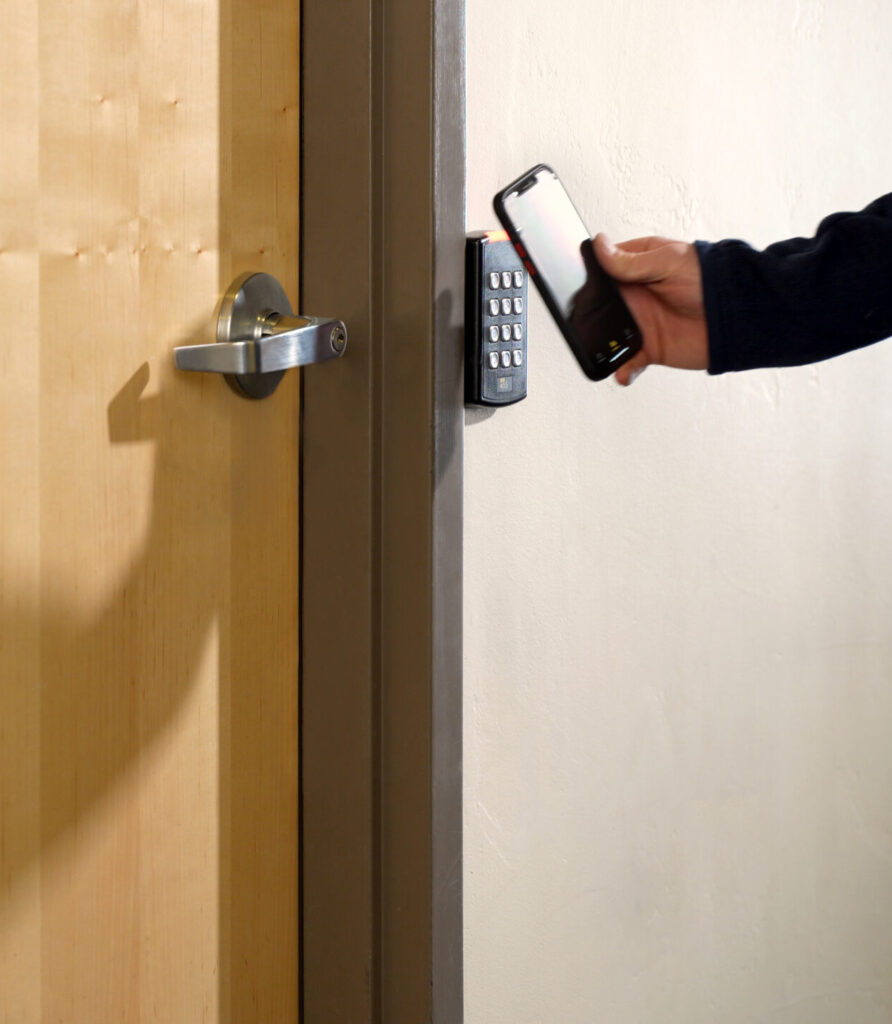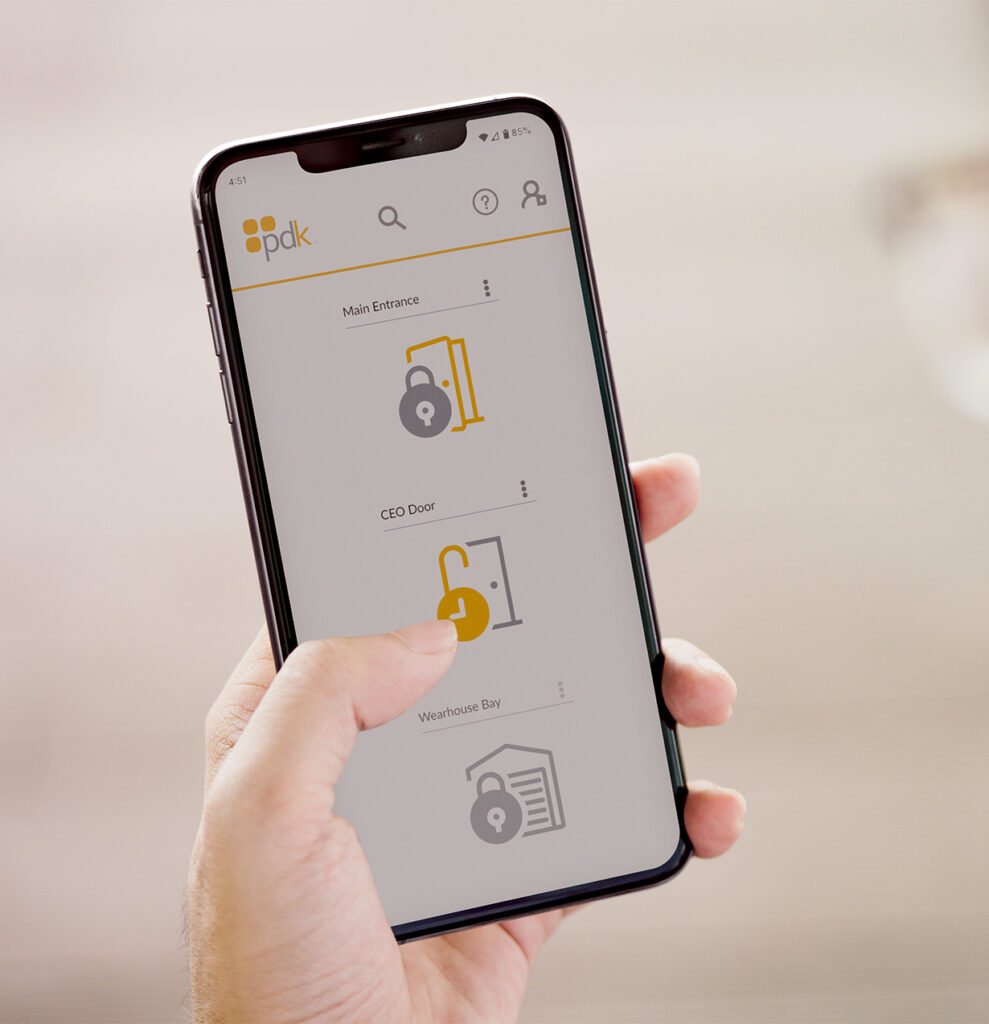Card Access systems (also called Access Control systems) control entry into a building or other protected areas within a facility. H&S designs and installs systems that currently protect areas such as computer rooms, telephone rooms, stock rooms, and general entrances throughout all of Wisconsin.
H&S takes care of the access control needs of banks, schools and other facilities that require the ability to lock down their building(s). We program these types of special requirements into the access control system — tailored to the customer’s specific circumstances.
Keyless Entry Systems
Authorized personnel are assigned credentials, which are presented to readers stationed at the point of entry or exit. The system allows entry or exit only if the particular credential has authorized access.
System features:
- System and Activity Monitoring
- ID Badges
- Video Verification
- Database and Event Reporting
- Bluetooth and/or Mobile Credentials
- Proximity or Encrypted Credentials

Proximity vs. Encrypted: What’s The Best Solution?

Proximity Credentials
Proximity cards use RFID technology to communicate with card readers from a short distance (usually a few centimeters). They often contain a unique identifier that is read by the system. Many existing systems are designed for proximity credentials; unfortunately, these systems are more susceptible to cloning and interception since the data is often transmitted in an unencrypted format.
Encrypted Credentials
Encrypted cards use advanced encoding methods to secure transmitted data. They often combine RFID with other technologies, such as smart card chips, which can store encrypted data. This data makes it much harder for attackers to clone or intercept information.
Access control card or fob duplication can pose significant security risks. Ensuring that the data on the access credential is encrypted, will prevent unauthorized individuals from copying or cloning the information